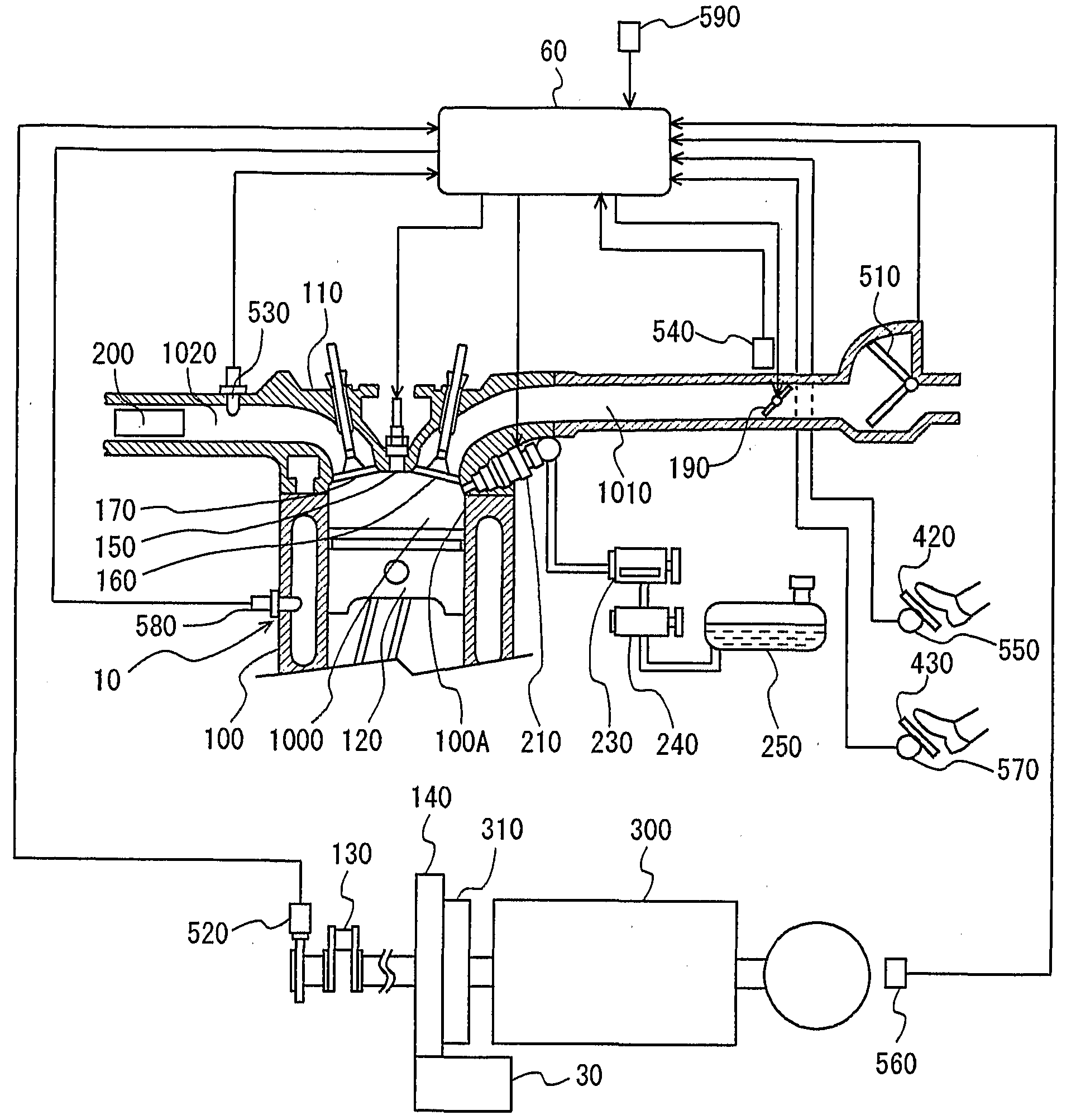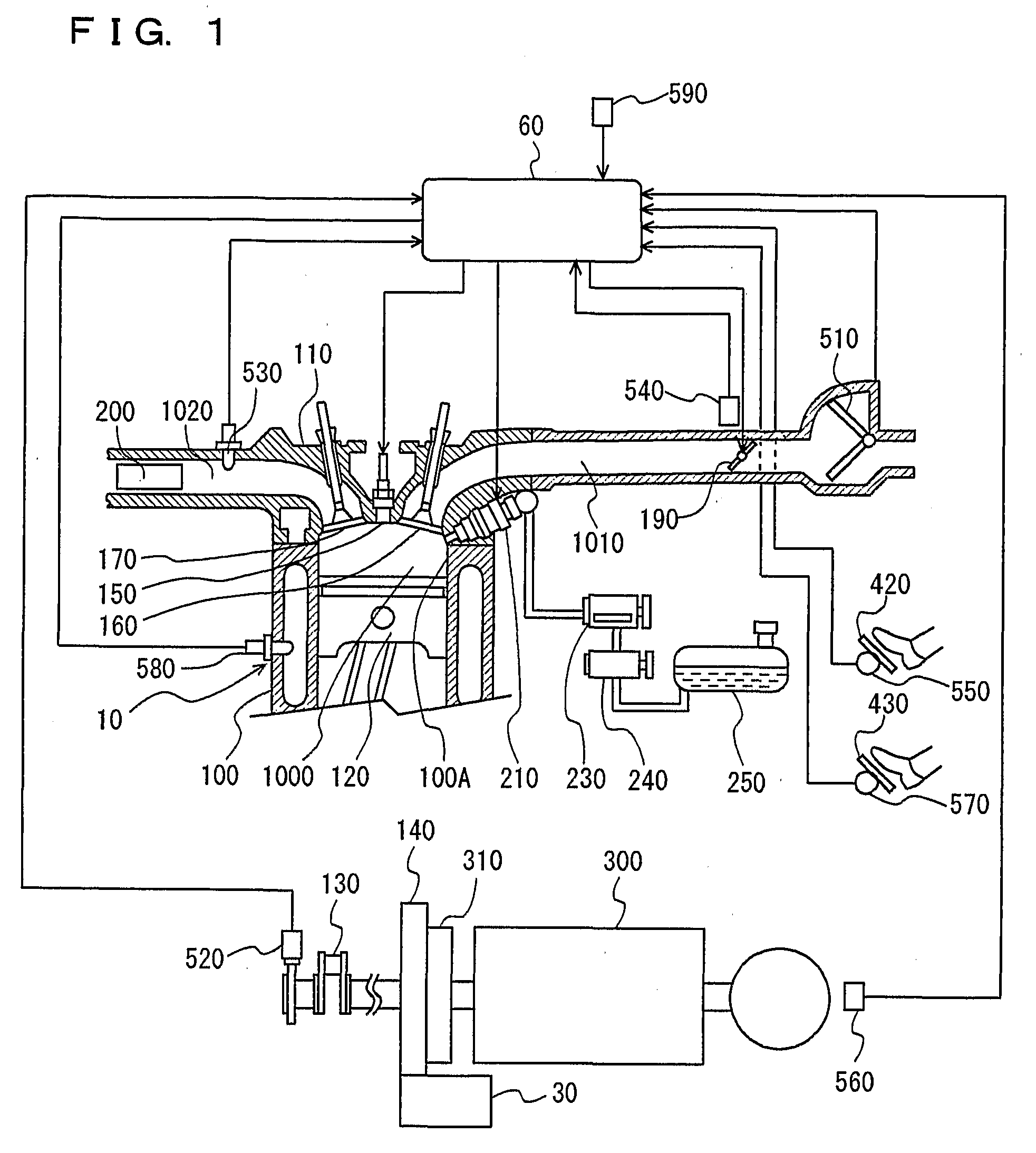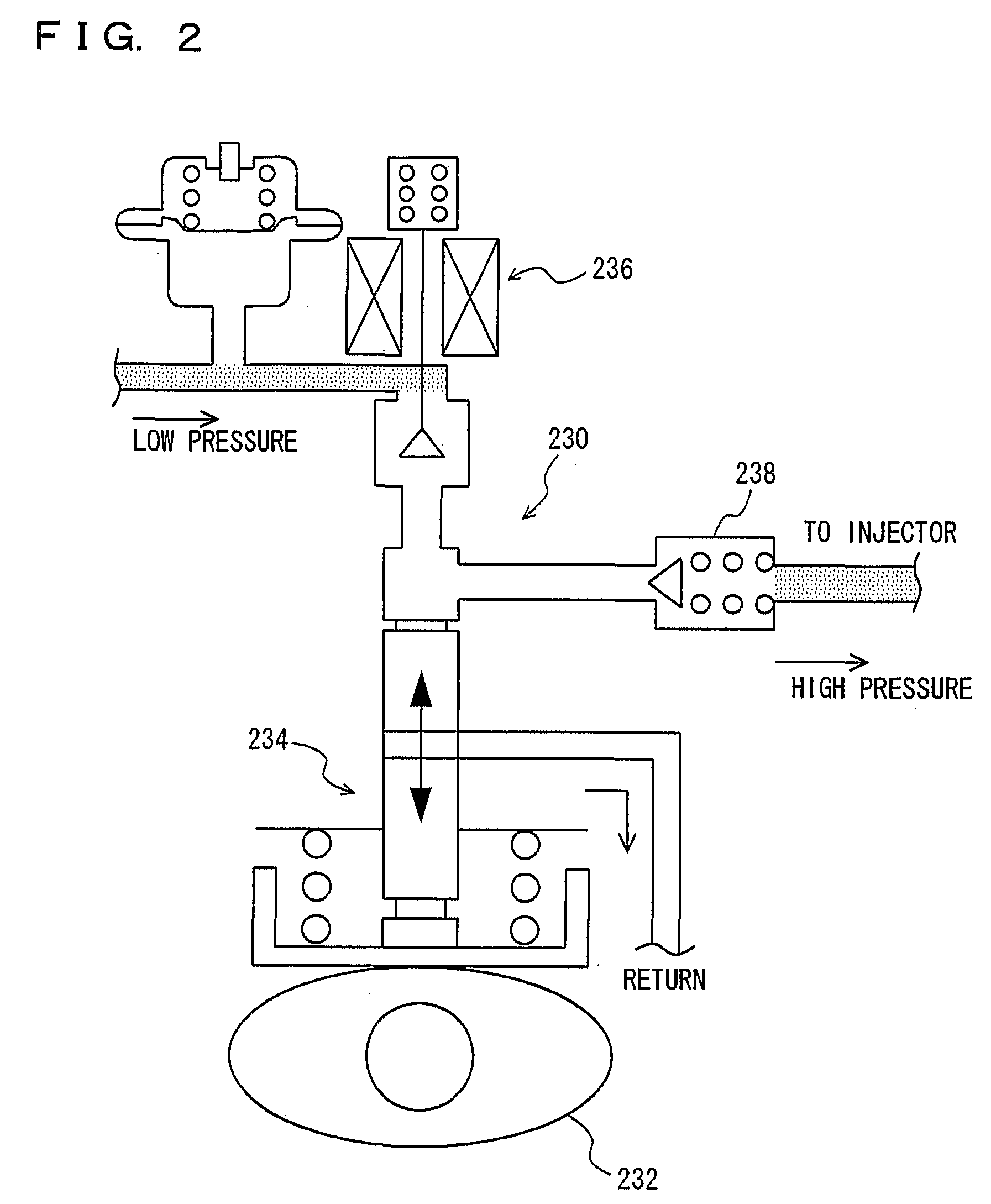[0006]An object of the present invention is to provide a control apparatus for an engine that can suppress variation in output due to lowering of the fuel pressure.
[0008]According to this invention, the fuel is injected from the fuel injection mechanism. The fuel pressure is adjusted to be the first pressure, or to be the second pressure lower than the first pressure. In the case where the fuel pressure is adjusted to be the second pressure, the fuel injected in the atomized state will decrease due to the reduction of the fuel pressure, which may cause degradation in atomization of the fuel. At this time, if the
atmospheric pressure is low and the intake air amount is small, the unstable
combustion state will become more unstable, leading to large variation in output of the engine. It may possibly lead to engine stall. Thus, in the case where the atmospheric pressure is lower than a predetermine pressure, switching from the first control to the second control is prohibited. This can suppress lowering of the fuel pressure in the unstable
combustion state, and thus, a sudden change of the combustion state can be suppressed. As a result, it is possible to provide a control apparatus for an engine that can suppress variation of the output due to lowering of the fuel pressure.
[0010]According to this invention, the pressurized fuel is injected from the fuel injection mechanism. The fuel pressure is adjusted to be the first pressure, or to be the second pressure that is lower than the first pressure at least in the region where the engine load is lower than a predetermined load, and that has a difference with the first pressure that is smaller when the engine load is high than when the engine load is low. In the case where the fuel pressure is adjusted to be the second pressure, the fuel injected in the atomized state will decrease due to the decrease in fuel pressure, which may cause degradation in atomization of the fuel. With the degradation in atomization of the fuel, the combustion state of the air-fuel mixture will change. As such, if the fuel pressure is lowered from the first pressure to the second pressure in the operation state where the difference between the first pressure and the second pressure is large, the combustion state of the air-fuel mixture will rapidly change, which may cause large variation in output of the engine. Thus, according to this invention, switching from the first control to the second control is permitted when the engine load is higher than a predetermined load. That is, the control is switched in the
high load state where the difference between the first and second pressures is small, while switching of the control is prohibited in the
low load state where the difference between the first and second pressures is large. This can suppress large variation in fuel pressure at the time of switching of control. As a result, it is possible to provide a control apparatus for an engine that can suppress variation in output of the engine due to lowering of the fuel pressure.
[0012]According to this invention, the pressurized fuel is injected from the fuel injection mechanism. The fuel injection amount is corrected based on an air-fuel ratio, for example. The fuel pressure is adjusted to be the first pressure, or to be the second pressure that is lower than the first pressure. In the case where the fuel pressure is adjusted to be the second pressure, the fuel injected in the atomized state will decrease due to the lowering of the fuel pressure, possibly leading to degradation in atomization of the fuel. With degradation in atomization of the fuel, the combustion state of the air-fuel mixture will change. If the fuel pressure is lowered from the first pressure to the second pressure after the required fuel injection amount is actually reduced, for example, the unstable combustion state due to such a small fuel injection amount may become more unstable. In this case, the output of the engine may also vary considerably. Thus, according to this invention, the first control is switched to the second control in the case where the correction amount for decreasing the fuel injection amount is greater than a predetermined correction amount and it can be said that the fuel injection period is highly likely to reach the
lower limit. This allows the fuel pressure to be lowered in advance before the fuel injection amount becomes actually small (in the state where the fuel injection amount after the reduction correction is large). Thus, in the state where the fuel injection amount (after the reduction correction) is small and the combustion state is unstable, the combustion state is prevented from becoming more unstable. As a result, it is possible to provide a control apparatus for an engine that can suppress variation in output due to lowering of the fuel pressure.
[0014]According to this invention, correction (lean correction) to decrease the fuel injection amount is carried out when the air-fuel ratio is richer than a predetermined air-fuel ratio (e.g., stoichiometric air-fuel ratio). When the correction amount by such reduction correction is greater than a predetermined correction amount and it can be said that the fuel injection period is highly likely to reach the
lower limit, the first control is switched to the second control. As such, the fuel pressure can be lowered in advance before the fuel injection amount becomes actually small (in the state where the fuel injection amount after the reduction correction is large). Thus, in the state where the fuel injection amount (after the reduction correction) is small and the combustion state is unstable, the combustion state is prevented from becoming more unstable. As a result, it is possible to suppress variation in output due to the lowering of the fuel pressure.
 Login to View More
Login to View More  Login to View More
Login to View More 


